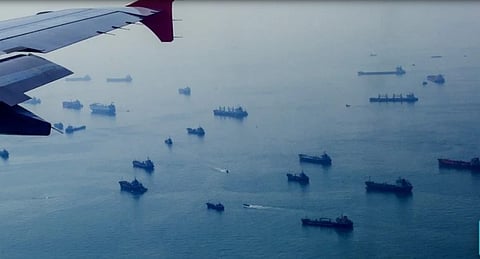Digital Technologies Vital for Transport Industry to Reach Net Zero
As the world seeks to rebound from the Covid-19 pandemic and the financial impact resulting from government measures taken during it, the transport industry is central to the global economic recovery.
Estimated to generate between 6 and 12% of the developed world’s GDP, the sector has a positive impact on the labour market and business landscape, directly employing a huge number and impacting billions of lives positively via the safe movement of people, goods and services.
Yet, the sector is already responsible for more than 20% of global CO2 emissions. It is the fastest-growing source of human-generated global greenhouse gases, expected to rise two-fold by 2050, if no action is taken.
Achieving Net Zero carbon emission targets by 2050 will require the accelerated deployment of both existing solutions (such as always-on connectivity) and emerging low-emission and zero-emission technologies (for example sustainable fuels) across all transport segments.
Saudi Maritime Congress 2022 to Emphasise Digitalisation
Research shows that significant carbon emissions reductions across most modes of transport – including aviation, maritime, and uncrewed aerial vehicles (UAVs) – can be achieved in a much shorter timeframe by embracing existing digital technologies in addition to sustainable fuel solutions.
In most cases, sustainable outcomes can be enjoyed alongside a considerable reduction in operating costs and improvement in profit margins.
“Meeting our climate goals by achieving Net Zero is the biggest and most urgent challenge the world faces,” said Rajeev Suri, CEO of Inmarsat.
“To have a fighting chance of achieving Net Zero, we must continue improving the efficiency of ‘conventional’ modes of transport while facilitating market penetration of zero-emissions solutions, such as electric vertical take-off and landing vehicles, more commonly known as ‘flying taxis’.
"The combination of the two will help reduce congestion while continuing to improve global mobility and consumer choice.”
New World Maritime Theme Highlights Environmental Legacy
Considerable sustainability gains can be achieved across the existing and emerging transport segments in the following ways:
Aviation: Today, the sector is responsible for 2.5 per cent of annual global, human-generated CO2 emissions. Yet, 5-10 per cent of these carbon emissions – largely resulting from inefficient routes and ‘stacking’ in the air over busy airports – are avoidable, according to Inmarsat’s most recent “Plotting the route to a greener future” report.
It outlines how Europe’s CO2 emissions can be reduced by 15 million tonnes per year from 2024 – comparable to the entire pre-pandemic emissions of countries such as Lithuania or Luxembourg.
Maritime: Responsible for more than 90% of world trade, it also accounts for 2.5% of global greenhouse gas emissions. Yet, left unchecked, maritime emissions could rise by as much as 250% in the period to 2050 according to the International Maritime Organisation (IMO).
A 38% reduction in GHG emissions could be achieved by 2050 with implementation of digital solutions enabled by satellite connectivity at just one tenth of the cost required to support the alternative fuels infrastructure, according to the ‘The Optimal Route’ report, by Inmarsat.
Uncrewed Aerial Vehicles (UAVs): With more than 660,000 deliveries by UAV in the last three years, and 3.8 billion parcel deliveries in the UK alone in 2019, the number of automated deliveries are set to skyrocket.
It is projected that there will be 10 million commercial UAVs flying in mixed airspace by 2030. Of these, an estimated 600,000 will be flying beyond visual line of sight (BVLOS) and these will rely on constant connectivity.
To put that in context, today there are approximately 23,600 airliners in service, carrying both passengers and cargo.
A recent Inmarsat report with Cranfield University found that using UAVs for freight delivery reduces urban transport CO2 emissions by up to 47%.
The greatest challenge to achieving this is the regulatory environment – which will rely on industry and government commitments to modernising Air Traffic Management (ATM).
Making this a reality is reliant upon satellite networks with global coverage to enable that modernisation to realise emissions reductions and the future of flying vehicles.
Zero emissions transport: Furthermore, the future of zero emissions transportation – including electric vehicles (EVs) and advanced electrical air mobility vehicles (such as flying taxis) – depends on smart, resilient clean energy-powered electrical grids.
With 86% of power generation set to come from renewable sources by 2050, such smart grids will be enabled by the connectivity delivered by solutions such as the Inmarsat I-6 satellites.
Read More: DHL has Recently Purchased Sustainable Aviation Fuel


